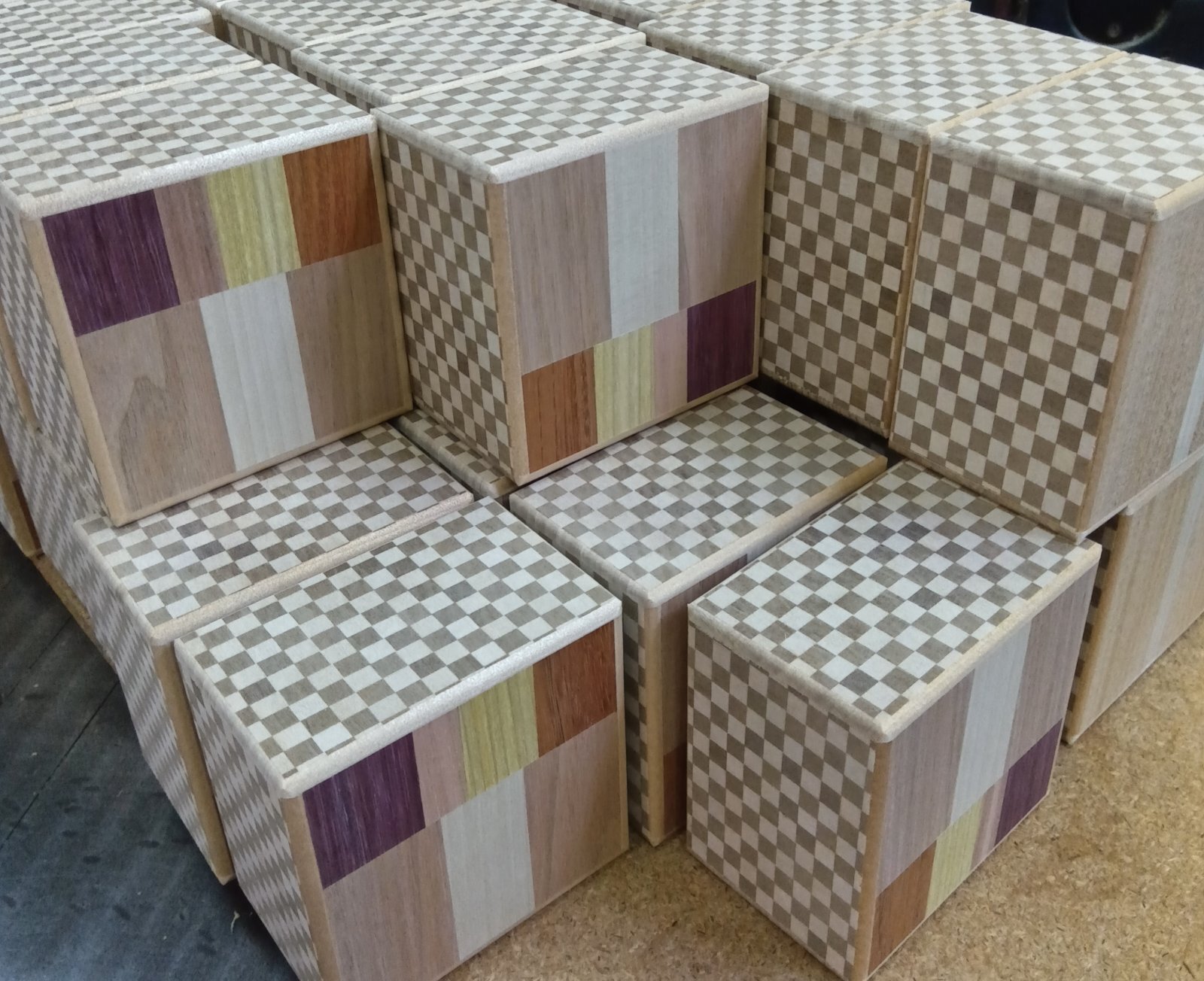Finishing process
The square-type Knock Box that I’ve been working on since last week has now reached the finishing stage.
Today was a bit cloudy, and there was no direct sunlight in the morning, so I took the opportunity to begin this step. Since the top and bottom panels are made from solid wood, I gave them one final polish using a machine. I had to be very careful, though—if the panels become too warm from the friction of the machine, there’s a risk they could warp.
Japanese puzzle boxes are made with thin panels, so they are especially sensitive to external factors like heat and humidity. Until the coating is applied, I need to stay alert and cautious.
It’s still early in the afternoon now, but I plan to apply the base coat later this evening. Once the base coat is done, I’ll feel a bit more at ease.
This time, the top panel has a unique design. It was created in a way that the direction of the stripes indicates the side where the knocking mechanism should be activated. This might be my first time using a design where several types of wood are grouped together in stripes on just one side of the panel.
While working on this box, I also thought of a new idea: by combining the traditional knock-type mechanism on one side with a Kannuki panel (like the one used in my 7-step boxes) on the other, it may be possible to turn this into a 10-step puzzle box. That would make the Knock Box feel even more like a classic Himitsu-Bako. If I have time in the future, I’d like to try making that version.
While waiting for the base coat process, I also worked on the side panels for the 2.5-sun box and attached them. This time, I used a slightly different solid wood design. The top edge of the panels includes yellow Urushi wood, which gives the box a slightly brighter appearance.
Although the sun wasn’t strong today, the humidity was high, making it feel even hotter. On days like this, the news keeps reminding people to be careful of heatstroke.
Today was a bit cloudy, and there was no direct sunlight in the morning, so I took the opportunity to begin this step. Since the top and bottom panels are made from solid wood, I gave them one final polish using a machine. I had to be very careful, though—if the panels become too warm from the friction of the machine, there’s a risk they could warp.
Japanese puzzle boxes are made with thin panels, so they are especially sensitive to external factors like heat and humidity. Until the coating is applied, I need to stay alert and cautious.
It’s still early in the afternoon now, but I plan to apply the base coat later this evening. Once the base coat is done, I’ll feel a bit more at ease.
This time, the top panel has a unique design. It was created in a way that the direction of the stripes indicates the side where the knocking mechanism should be activated. This might be my first time using a design where several types of wood are grouped together in stripes on just one side of the panel.
While working on this box, I also thought of a new idea: by combining the traditional knock-type mechanism on one side with a Kannuki panel (like the one used in my 7-step boxes) on the other, it may be possible to turn this into a 10-step puzzle box. That would make the Knock Box feel even more like a classic Himitsu-Bako. If I have time in the future, I’d like to try making that version.
While waiting for the base coat process, I also worked on the side panels for the 2.5-sun box and attached them. This time, I used a slightly different solid wood design. The top edge of the panels includes yellow Urushi wood, which gives the box a slightly brighter appearance.
Although the sun wasn’t strong today, the humidity was high, making it feel even hotter. On days like this, the news keeps reminding people to be careful of heatstroke.
